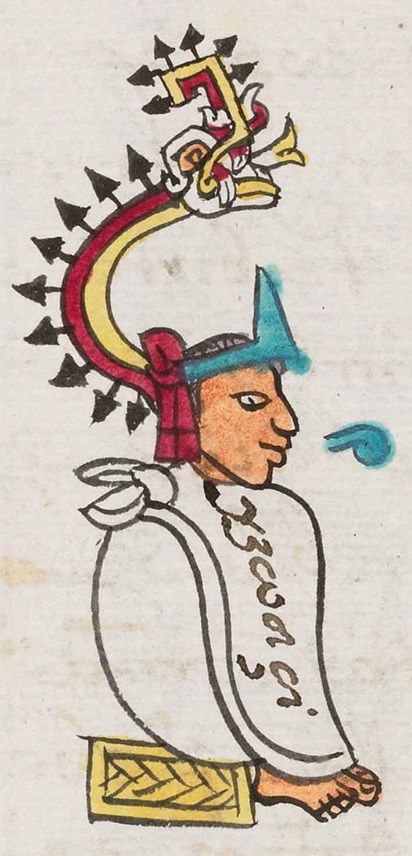Itzcóatl

Itzcóatl ( Nahuatl for obsidian snake ; * 1380 ; † 1440 ) was ruler of the Aztec city Tenochtitlán from 1427 to 1440 .
Live and act
As the son of the ruler Acamapichtli and a slave, he was only able to ascend to the throne after his nephews Huitzilíhuitl and Chimalpopoca had become rulers and died. With his election he was the first ruler who did not directly succeed his father in the office of tlatoani .
In the first years of his reign he allied himself with Nezahualcóyotl , the ruler of Texcoco , to fight Maxtla , the new ruler of the Tepanecs . Nezahualcóyotl had been driven out of Texcoco by Maxtla and was now looking for a way to regain his rule in association with a few other cities in the Valley of Mexico. In the first phase of the war, Texcoco and part of the Acolhua area were retaken; afterwards the march on the capital of Azcapotzalco began. At first Tlacopán fell without a fight; after that Azcapotzalco was conquered after a four-month siege and most of the residents were killed. Maxtla was able to flee to Coyohuacán , but was murdered there in 1431. The last resistance could not be broken until 1433. After the defeat, Nezahualcóyotl was enthroned in Tenochtitlán as the new ruler of Texcoco.
In 1430 Itzcóatl concluded an alliance with the rulers of Texcoco and Tlacopán , the so-called Aztec Triple Alliance , which formed the basis for the undisputed rule of the Aztecs over the region. After conquering a few other cities in the south of Lake Texcoco, the Aztecs finally controlled all of the territory that had previously been ruled by the Tepanecs, with the exception of the city of Chalco .
Itzcóatl pushed the expansion of the city of Tenochtitlán. A large number of temples, roads and dams to regulate the water level of Lake Texcoco , in the middle of which the city was built on an artificial island, were built during his reign. He also initiated a cultural revolution with which he wanted to lead the Aztec people to even greater glory. To do this, he instrumentalized history and culture and had a large part of the old books burned. Later he was the only Aztec ruler to be nicknamed Cemanáhuac tepehua , which means conqueror of the world .

About his son Tezozómoc (not to be confused with the eponymous king of the Tepaneks), who married the daughter of his half-uncle Moctezuma I , Itzcóatl was the grandfather of the later rulers Axayacatl , Tízoc and Auítzotl .
His rule was significantly influenced by his deputy Tlacaélel .
literature
- Martín Borboa: Itzcóatl: Emperador Mexica . Plaza y Valdes, Mexico City 1997. (Spanish)
- Hanns J. Prem : The Aztecs. Culture - history - religion . Verlag CH Beck, Munich 2006. ISBN 3-406-45835-1
- Hanns J. Prem: History of ancient America . Oldenbourg, Munich 1989 (2nd revised edition 2007). ISBN 3-486-53032-1 .
Web links
| personal data | |
|---|---|
| SURNAME | Itzcóatl |
| BRIEF DESCRIPTION | Ruler of Tenochtitlán (1427-1440) |
| DATE OF BIRTH | 1380 |
| DATE OF DEATH | 1440 |